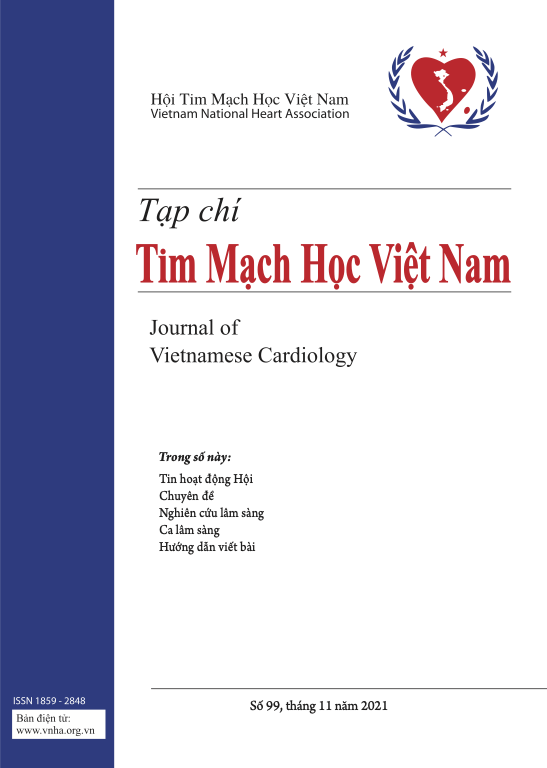Correlation between heart rate and oxygen saturation with mean pulmonary arterial pressure in acyanotic congenital heart diseases
Tóm tắt
Background
Pulmonary Hypertension (PH) was defined by elevated pulmonary arterial pressure (PAP) and increased pulmonary vascular resistance, often resulting in right heart failure and untimely mortality. The predictive significance of heart rate (HR) and peripheral oxygen saturation in precapillary pulmonary hypertension caused by acyanotic congenital heart disease (CHD) remained still not extensively researched. The aim of this study was to evaluate correlation between heart rate and peripheral oxygen saturation with mean pulmonary arterial pressure patient in acyanotic congenital heart disease.
Methods
114 patients were diagnosed with asyanotic CHD. We calculated the patients' HR based on their age and categorized patients into those with increased and unchanged HR. We conducted right heart catheterization (RHC) on the samples and calculated the mean pulmonary arterial pressure (mPAP) and peripheral oxygen saturation. The data on mPAP was then correlated with the heart rate based on the patients' age and peripheral oxygen saturation, then we analysed statistically.
Results
Out of 114 patients with asyanotic CHD, 35.1% were male, and 64.9% were female. All patients had acyanotic CHD with left-to-right shunt, and none exhibited symptoms or signs of Eisenmenger syndrome. Among them, 36% were diagnosed with atrial septal defects, 40.3% with ventricular septal defects, and 23.7% with patent ductus arteriosus. The patients ranged in age from 3 to 50 years, with an average age of 15 (3-50) years, an average weight of 35,5 (10-90) kilogram, and an average oxygen saturation of 98,54 ±0,8%. HR was categorized into two groups based on patient age when RHC was performed, with the HR increase group having a mean heart rate of 109 (101-131) beats/minutes and the non-increase HR group having 89 (60-115) beats/minutes (p = <0,001). Patients underwent RHC and were grouped into those with an increased mPAP with a mean of mPAP was 45 (20-93) mmHg and those with unchanged mPAP with a mean of mPAP was 18 (10-19). The data were transformed into nominal form, normality tests were conducted, and bivariate analysis was performed. The correlation between HR and mPAP showed a significant relationship (p = 0.001), indicating an association between increased heart rate and elevated mPAP in patients with acyanotic CHD. The weak correlation was demonstrated by the relationship between peripheral oxygen saturation and mPAP (p<0,001).
Conclusion
In patients with acyanotic CHD, a significant relationship was found between HR (heart rate) and peripheral oxygen saturation with mPAP, where an increase in mPAP could lead to an elevation in HR and conversely decrease in peripheral oxygen saturation. This assisted in predicting mPAP and guiding the management of pulmonary hypertension treatment when patients were in a peripheral hospital without access to invasive or non-invasive modalities of examination.








